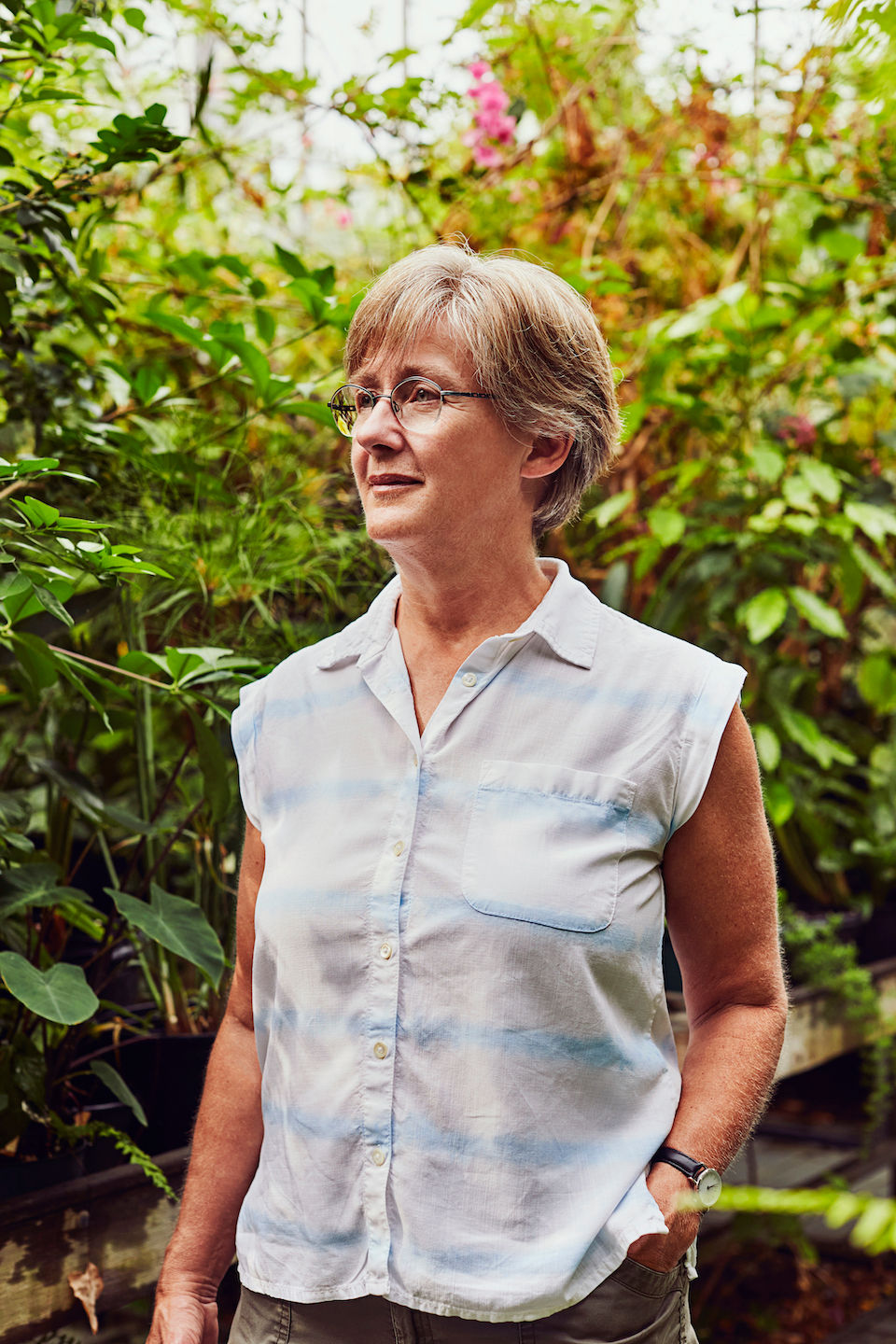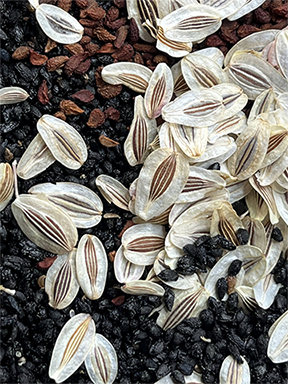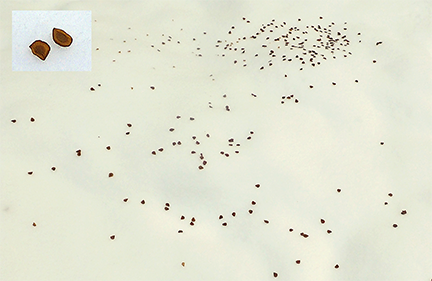The Quarterly Buzz
- Native Bee Society of BC

- Dec 23, 2022
- 11 min read
Updated: Mar 26, 2023
Newsletter of the Native Bee Society of British Columbia December 2022
Volume 3 | Issue 4

-----
Editors-in-chief: C. Thuring & M. Marriott
Contributors: Sky Jarvis, Elaine Sedgman, Valerie Huff, Bonnie Zand, Christine Thuring
Fly Straight to Article:
NBSBC 2022 Annual General Meeting

This year we marked the fourth Annual General Meeting (AGM) of the Native Bee Society of BC. Held on the evening of Monday, November 24, 2022, the AGM was hosted over Zoom by Erin Udal, with tech support from board member Jen Woodin. The in-coming and outgoing Secretaries, Sky Jarvis and Christine Thuring, tag-teamed on taking notes and recording attendance. With over 30 people in attending, featuring an even mix of board and general members, it was an engaged and fun evening!
The AGM opened with a heartfelt land acknowledgement by Marika Ai-Li, in which she brought to life some of the indigenous teachings she has learned from her teachers. Lori Weidenhammer and Paula Cruise provided an annual review on the business of the society, including programming on education and outreach, a summary of the Quarterly Buzz, the NBSBC newsletter, as well as fundraising initiatives and upcoming projects.
Elections were done by poll; all positions were uncontested. Check out the profiles of our 2023 Directors here.
The new executive team that will lead the society in 2023 includes:
Chair (President): Christine Thuring
Co-chair (Vice-president): Paula Cruise
Treasurer: Nikki Donkersley
Secretary: Sky Jarvis
The board of directors comprises 10 members at large, including Lori Weidenhammer, Marika Ai-Li, Bonnie Zand, Maureen Marriott, Lincoln Best, Valerie Huff, Erin Udal, Jen Woodin, Neill McCallum, Tamara Litke. Gratitude was expressed to those stepping down from the Board: Jennifer Lipka, Leslie Williams, Miranda Moll, and founding president, Sarah Johnson.
Following the elections, Treasurer, Nikki Donkersley, provided a yearend review of financials. It’s been affirmed, the society is in good shape! Bonnie Zand then provided highlights from the Native Bee Study Group, which was as entertaining as it was informative. This study group takes place on the 4th Wednesday of each month. See Bonnie’s study group 2022 summary below.
Some items that came up in discussion included the following:
Pollinator Protection Conference (October 2023).
LinkedIn: suggestion that the NBSBC establish a profile (seeking a volunteer to manage social media).
Ideas for grants: Microscopes and safari supplies; mini collections for field trips.
Bee Safari hosted by Linc near Penticton in mid-June 2023 (who’s in?).
Volunteer involvement: need a coordinator to facilitate support and engagement.
The chat was quite lively, including a proliferation of bee jokes. Here are our top three:
What’s a bee's favourite music?
What gemstones do bees love most?
What's a bee’s favourite sport?
Research Corner
Habitat fragmentation: Uncovering the truth about its beneficial effects on native bees
by Elaine Sedgman
Editors’ Note: We are delighted to publish this conversational and dynamic piece prepared by member Elaine Sedgman. Through her correspondences with Dr. Lenore Fahrig about fragmentation and biodiversity, Elaine shares with us some essential clarifications about the role and potential of habitat fragmentation on native bees and other wildlife. One key take-away we indulge in emphasizing is that habitat fragmentation is not the same as habitat loss, something that Dr. Fahrig consistently pointed out in her work. May we all dance with Elaine in the joy of knowing how to effectively create valuable pollinator habitat, minus the zombies! ~ Christine Thuring
As a Master Gardener passionate about native bees, I have been pushing gardeners for years to get rid of their lawns, rewild their yards and create more pollinator habitat. In autumn 2022, I corresponded with Dr. Lenore Fahrig, who affirmed that indeed, every little bit counts. I wanted to share my experiences with this community, as it is relevant to anyone wishing to support native bees and their populations.

Dr. Lenore Fahrig is a landscape ecologist and conservation biologist of distinction, and a Professor at Carlton University since 1991. She and her students study the effects of landscape structure on various forms of biodiversity, and on the abundance, distribution and persistence of wildlife populations. The amount and kinds of land cover, as well as its spatial arrangement, are important components of her studies.
“My research on habitat fragmentation demonstrates the cumulative conservation value of small habitat patches, and empowers small-scale conservation efforts by individuals and communities." The Fahrig Lab.
Fahrig has won many honours and awards, including Guggenheim Fellow and, more recently, Canada's most prestigious scientific award, the Herzberg Prize Canada Gold Medal for Science and Engineering.
In November 2022, a news article and interview about the Herzberg Prize made me sit up and take notice. In fact, I danced around the kitchen when I read some of Dr. Fahrig's statements. One excerpt, from the Globe & Mail: “…if you have a whole bunch of little patches (of landscape), it can be as valuable or even more valuable than having one large area of the same total size” (Semeniuk, 2022). In a similar interview on CBC Radio she said, “Every bit of natural habitat is important in some way for biodiversity... it does add up to a big impact in terms of protecting species.”
But then I stopped and asked, “How can this be? Everything I have read on habitat fragmentation and bee diversity has been negative!” Thus began our correspondence.
I reached out and asked Dr. Fahrig about Beverly Rathcke’s paper, in which the latter asserts that “habitat fragmentation can clearly disrupt plant-pollinator interactions and threaten the local persistence of plants and pollinators” (Rathcke, 1993).
Fahrig’s response (via email, October 26, 2022):
The paper that you attached is really about the effects of habitat loss, not habitat fragmentation itself (even though they use the word fragmentation). We do see lower bee diversity when we have less bee habitat. However, to ask about the effect of habitat fragmentation itself, we need to compare bee diversity across different landscapes that have the same amount of habitat, but vary in how fragmented that amount of habitat is, i.e. is the habitat in a few large patches or many small ones? As far as I am aware, no-one has directly tested this for bees. However, if bees are like most other groups of species, I would predict that their diversity is higher across a large group of small habitat patches than across a small group of large habitat patches.
Although this hasn’t been directly tested, we have done some related work. We studied the effect on bee diversity of average crop field size, across different 1x1-km areas (“landscapes”). For the same amount of cropped land, we find higher diversity of wild bees when the fields are smaller. This is indirect evidence for a positive effect of fragmentation, because in landscapes with small fields, the natural habitat also tends to be in small patches. (See Fahrig, 2015)
It turns out that Fahrig has been researching habitat fragmentation for 40 years. Her early work led to her 2003 paper, Effects of Habitat Fragmentation on Biodiversity, which is the most cited paper on habitat fragmentation in the world. In this paper she addressed the difference between the terms habitat loss and habitat fragmentation:
“I suggest that the term “fragmentation” should be limited to the breaking apart of habitat. Habitat loss should be called habitat loss; it has important effects on biodiversity that are independent of any habitat fragmentation per se. Habitat fragmentation should be reserved for changes in habitat configuration that result from breaking apart of habitat, independent of habitat loss.” (Fahrig, 2003)
Her 2017 update of this paper reaffirmed her findings. She stated in her conclusions:
“…most authors still assume that the effects of habitat fragmentation independent of the effects of habitat loss are generally negative… The results of this review indicate that such statements are in fact false. Although habitat loss is, without doubt, one of the most significant causes of biodiversity decline, the significant responses to habitat fragmentation independent of habitat amount are rare and mostly positive.” (Fahrig, 2017a).
Unfortunately, as Fahrig asserts, the idea that habitat fragmentation is inherently bad still lives on as a “zombie idea” (Fahrig, 2017a). Indeed, this false view is promoted by popular writers such as Douglas Tallamy. In his recent book, Nature’s Best Hope: A New Approach to Conservation That Starts in Your Back Yard, (Timber Press, 2019) Tallamy quotes D. Saunders, stating that “…nearly every species that has been studied shows negative effects from carving their habitat into pieces, even when those pieces are large” (Saunders et al.1991). Via email (Nov.10, 2022), however, Dr. Fahrig affirmed that “[the Saunders] paper is really about the effects of habitat loss, rather than the effects of habitat fragmentation.” With his book, Tallamy envisions a practical, grassroot approach to conservation and describes how we can turn our yards into wildlife habitats. Unfortunately, his anathema to fragmentation does not serve that vision nor does it align with the science.
For myself, I will return to my happy dancing, because I know that we gardeners can make a difference. As Dr. Fahrig notes via email “The essential point is that every bit counts. A single homeowner switching out their lawn for natural habitat will not save all the bees, but it will contribute. If many homeowners do the same thing, then the total can add up to a big benefit for bee populations.”
For those interested in native bees specifically, and population ecology generally, I encourage us all to be vigilant when we encounter discussion of habitat fragmentation. Ask the question: Is this paper about habitat loss or habitat fragmentation? If we encounter writers promoting “zombie ideas” that should have been laid to rest many years ago, let’s challenge the lack of scientific rigour if that feels good! No matter what, let’s make sure we’re making a positive difference in our landscapes, by providing a diversity of habitat types!
Accompanying photos
To conclude this article, I’d like to share some images from Gardengate, an organic horticulture project in Kamloops that represents the ideas Fahrig was referencing in her 2015 paper. The 2.8 acres of Gardengate feature small, fragmented patches of natural habitat that, as shown below, support a wide diversity of wildlife. I've been observing this site for 10 years and I am continually astounded by the remarkable diversity of bees that these small patches can support. Gardengate promotes healthy eating and active living for persons with mental health issues.

[Use arrows on image to move to the next or previous photo.] All photos: Elaine Sedgman Image 1: Agapostemon texanus nesting in an area with natural sandy loam soil, without additional organic matter. (The most interesting point isn’t conveyed by the image: the neighbouring plot that received organic matter did not support any ground-nesting bees).
Image 2: Jesse Ritcey of the Kamloops Naturalist Club created a highly successful experimental plot of native plants.
Image 3: Master Gardeners grew an experimental plot of common annuals to assess pollinator abundance and preference. Image 4: Megachile foraging on a Gaillardia aristata in the native plant area. A great plant for the home garden.
Image 5: A diversity of wildlife is attracted to Gardengate.
References
Fahrig, L. (2003). Effects of habitat fragmentation on biodiversity. Annual review of ecology, evolution, and systematics, 487-515.
Fahrig, Lenore et al. (2015). Farmlands with smaller crop fields have higher within-field biodiversity. Agriculture, Ecosystems & Environment. 200. February 2015, Pages 219-234
Fahrig, L. (2017 a) Ecological responses to habitat fragmentation per se. Annual review of ecology, evolution, and systematics, 48 1-23.
Rathcke, Beverly J., and Erik S. Jules. (1993) Habitat Fragmentation and Plant–Pollinator Interactions. Current Science, vol. 65, no. 3, pp. 273–77. JSTOR
Semeniuk, I. Ecologist wins Canada’s top Science prize. (Oct. 2022) The Globe and Mail, p.A4.
Bio
Elaine Sedgman is an educator, artist, Master Gardener and the author/illustrator of a Bee Named BOB (2019) and Andrena a Mining Bee (2022).She completed the requirements for Apprentice Level Certification of the Oregon Bee Atlas Master Melittologist Program (2021) and is the Citizen Science Coordinator for Thompson Shuswap Master Gardeners, organizing workshops and pollinator counts with adults and children. The first thing she does on a summer morning is to brew a cup of tea and go searching for what’s buzzing in her garden.
Native Bees Needs: Winter Edition
Snow Seeding
by Valerie Huff
Here in the BC Interior, the snow has been falling steadily. It’s a great time for holiday celebrations: wassailing, Christmas lights, the perfect latke. And, for plant and bee enthusiasts: Snow Seeding.
For most gardeners, it may seem like an odd time to be planting seeds. For native plants, winter is a great time to sow! Snow seeding is just what it sounds like – broadcasting seed right on top of the snow. The seeds should sink slightly into the snow. With some sun, they will melt through the snow and provide the perfect cold, dark, moist environment the seeds need to break their dormancy. When spring arrives, new growth will emerge.
Image One: Seeds of ʔi̓ʔtx̌ʷǎʔ (Camassia quamash), glacier lily (Erythronium grandiflorum), and nine-leaved desert-parsley (Lomatium triternatum) ready for mid-winter snow-seeding. Most native plants are adapted to a cold winter and a moist spring. Snow-seeding provides these necessary conditions.
Image Two: Columbia lily (Lilium columbianum) seeds scattered right on top of the snow. These seeds will take 2 years to germinate, and another 10 years before they flower. Seeds can teach us patience! Photos: Valerie Huff
It’s best if the ground under the snow has been prepared prior to seeding. Snow seeding over lawn may have poor results due to competition. But don’t worry if you haven’t got ground prepared. You can always do a bit of snow seeding onto small trays that are set outside for the rest of the winter. This is an excellent way to get lots of small seedlings for planting in the garden in the spring.

Another alternative is to provide your seeds with winter-like conditions. This can be done by placing the seeds in a zip-lock bag with damp (not wet) sand, perlite or peat moss, and storing it in the refrigerator. This is called ‘cold-moist stratification’. Watch them for signs of germination, the put them into pots until they establish.
Image 3: Wild licorice (Glycerrhiza lepidota) seeds in moist sand in plastic bag ready for their long winter’s nap.
Bio
Valerie Huff is the program manager for the Pollination Pathway Climate Adaptation Initiative of the Kootenay Native Plant Society. She believes that you can’t conserve native pollinator diversity without conserving native plant diversity, and that this starts with seeds.
Native Bee Study Group: 2022 Year in Review
by Bonnie Zand, on behalf of the Native Bee Study Group
Thanks to Elaine Sedgman, K. Andrews, Lee Larkin and Bob McDougall for sharing their Study Group observations and photos!

The Native Bee Study Group has been ongoing for 10 months now, and the submissions just keep getting better! On the 4th Wednesday of every month, members and guests of the NBSBC come together to share their observations of BC’s amazing native bees. Participants have the option of contributing to the shared slide deck, thereby showcasing their photos, asking questions, sharing their knowledge and learning from other members of the group. Each month has a theme that serves as a jumping off point for our discussion for the month.
In the last quarter, we examined fall bees and the plants that they feed on. In August we talked about endemic and non-endemic plants, and which bees prefer, observed a bumble bee pollinating ghost pipe (a myco-heterotroph), learned how to identify polyester bees (Colletes sp.), and saw mating cuckoo bees.

September featured our last bee photos of the year, and some of the late blooming plants that support them. We also had some great discussions on how to tell the difference between bees and wasps. (Its harder than you think!)
In October we looked for examples of interesting bee behaviour, and had a special presentation from member Helena Gazdik on genus Coelioxys. Behaviours our members had noticed ranged from thermoregulating early in the spring, to nest initiation, mating and sleeping in flowers.

November’s meeting looked at bee-plant associations, with many members featuring the high diversity of bees, wasps and flies they had observed on plants such as goldenrod, rabbitbrush, horsebrush, and thistle. As well, we looked at some more specialized interactions, such as those of oil collecting bees.

While there is no meeting in December, we look forward to reconvening on January 25, 2023, to look at Cuckoo Bees. Please RSVP to join us here!
Bio
Bonnie Zand is the host of the Native Bee Study Group. She is based out of the Comox Valley, on Vancouver Island. She works in the intersections of pollination and agriculture, running an IPM consulting company, Bonnie’s Bugs IPM, and leading the Vancouver Island Pests, Pollinators and Beneficials Project. Bonnie is the BC instructor for the Master Melittologist Program, and loves to help others learn how awesome bees are. Bonnie also contributes to pollinator conservation through outreach to garden clubs, bee clubs, and school groups, as well as through her work with the endangered Taylor’s Checkerspot Butterfly.
Answers to Bee Jokes from AGM
What’s a bee's favorite music? Sting (but also Bee-yonce and The Bee-Gees)
What gemstones do bees love most? Ru-bee.
What's a bee’s favourite sport? Ultimate fris-bee
Find us on:
Facebook: www.facebook.com/BCNativeBees/
Instagram: bcnativebees
Twitter: @BCNativeBees
Interested in getting involved with the society?
Contact us at: bcnativebees@gmail.com





















Comments